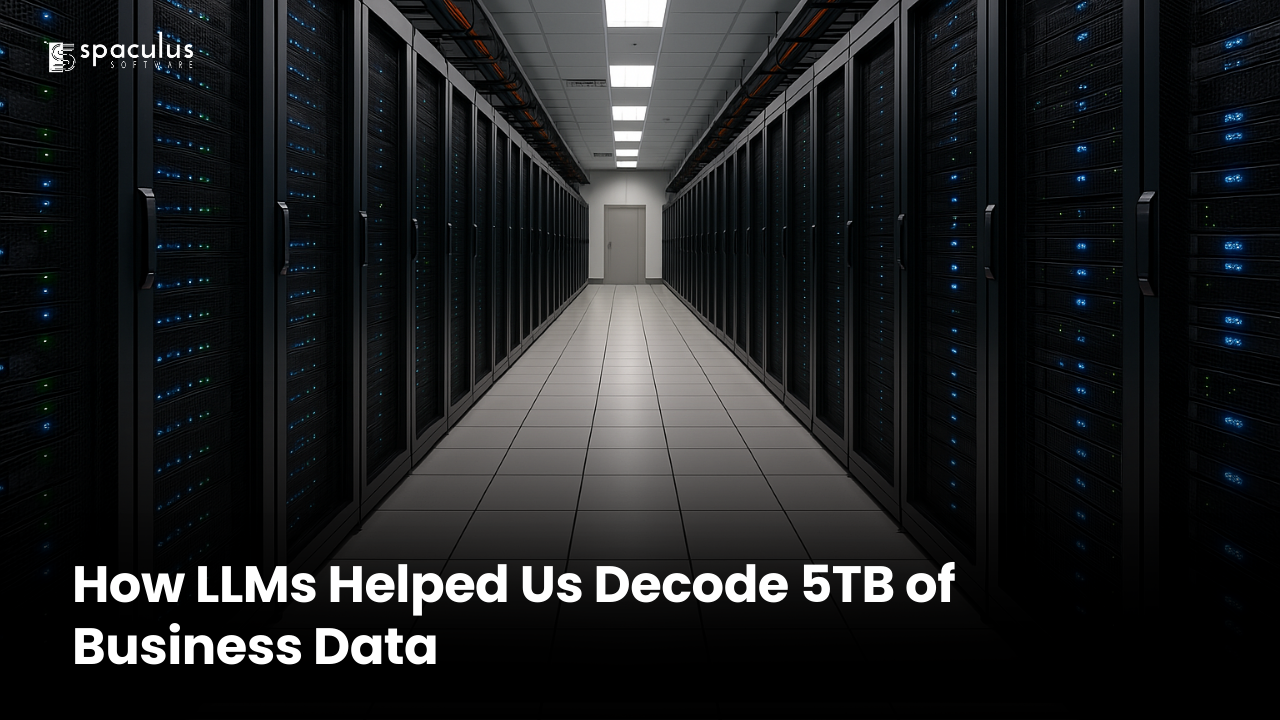
There’s a quiet shift happening.
Not the kind you read in big announcements. But the kind that starts in the background — inside folders, file drives, and dashboards that haven’t been touched in years.
Large Language Models (LLMs) are making it possible to use business data that used to be too messy, too old, or too scattered to be useful. Not just to clean it, but to actually understand it.
You don’t need a fresh database. You don’t need perfect formats. You just need access to the data and a reason to look at it again.
If you’re someone sitting on years of customer messages, support logs, emails, scanned PDFs, internal notes, reports, or CRM exports — this is for you.
Not because you need a new tool, but because you probably already have enough data to answer most of the questions your team has been stuck on.
The problem isn’t collecting more. It’s seeing what’s already there.
And that’s where LLMs step in.
Most businesses generate more data than they can handle. Some of it is organized, but most of it ends up scattered in formats like:
This kind of data isn’t structured. It wasn’t created with analysis in mind. So it just sits there. You know it has value, but nobody has the time or energy to go through it.
And traditional tools? They usually want things in neat tables. You need to clean, format, tag, and normalize before you can even start asking questions.
That’s why the data gets ignored.
LLMs don’t need everything to be clean.
They’re trained to read language the way people write and speak it. That means they can work directly with messy, raw text.
They don’t care if a document is written in long sentences or short notes. They don’t mind if an email is polite but vague. They can still pull out meaning.
Instead of needing every line to be tagged and labeled, you can feed in an unfiltered pile of content and ask the model simple, natural questions like:
That’s the shift.
You’re no longer relying on someone to spend weeks formatting and cleaning. You’re using the model to help you explore the data as it is.
Let’s say you have customer feedback going back 5 years. It’s in a mix of:
Before, you’d need to extract it all, convert it into a structured format, categorize each comment, and maybe run sentiment analysis.
With an LLM, you can start with a prompt like:
That alone can save hours.
From there, you can go deeper:
No need for a massive data pipeline. No need for a full rewrite of your process. You just talk to the data.
Insights from old data are useful. But insights that lead to better decisions — those are the ones that pay off.
Some examples of what teams are doing:
These aren’t hypothetical. These are the kinds of questions that LLMs are helping teams answer — using data they already had.
It’s not about chasing the next flashy AI trend. It’s about making better calls using the stuff you already paid to store.
This is one of the best parts.
You don’t need to write code to use an LLM anymore. There are tools that let you:
If you’ve used ChatGPT or something similar, you’ve already seen a glimpse of what’s possible.
And if you’re working with a team like a trusted LLM Development company, you can take that even further — building tailored assistants, workflows, or search tools for your business specifically.
It doesn’t need to be a massive project. You can start with one problem, one dataset, and one question.
This is probably the most important thing.
LLMs don’t force you to change your data. They invite you to change how you think about it.
Instead of asking:
“How do we clean all this up?”
You can ask:
“What can we learn from this today?”
Instead of planning a 3-month reporting upgrade, you can try something small right now:
You might not get perfect answers. But you’ll probably get better ones than you expected.
If you’re thinking of trying this, here’s one way to start without overwhelming yourself:
That’s the start.
You don’t need a team of data scientists. You need curiosity and a little space to experiment.
LLMs are not great for everything. A few things to keep in mind:
They are tools for exploration and insight. Not for final decisions without review.
If something matters, double-check it.
As you start using LLMs on more internal data, you’ll probably run into a few things:
Eventually, you’ll start thinking differently about how you write things down, store things, and track decisions. Not because someone told you to. But because now you know that writing things clearly and consistently makes them easier to search, learn from, and act on.
If you’re using internal documents, be mindful of:
Don’t send that data to open platforms unless you’ve removed or masked sensitive parts.
There are private deployment options that keep everything on your own servers. Or you can work with a trusted LLM Development company to set that up securely.
There’s a lot of talk about what AI will do. But sometimes the best use of it isn’t about the future. It’s about cleaning up the past.
All the data you’ve stored — the reports, the tickets, the call logs — it’s not junk. It just hasn’t been readable until now.
And if you can read it again, you can learn from it again. And maybe that’s enough to make a better call tomorrow than you did yesterday.
That’s not flashy. But that’s real value.
Business Analytics